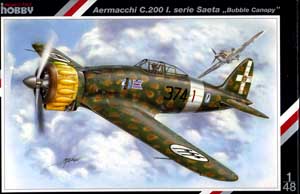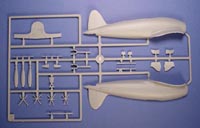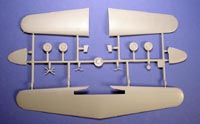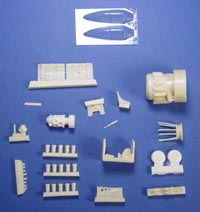Special Hobby 1/48 Aermacchi C.200 I.series Saeta in 1/48 scale
By Ralph Nardone
 |
Has it been 15 years since the model manufacturers finally realized there was a need for more and better 1/48 kits of Italian aircraft from World War II? It seems like only yesterday that Secter released its 1/48 Fiat G.50 kit. Then came Hasegawa with its Aermacchi C.202 and C.205 kits-many of us wondered if Hasegawa would later grace us with a series of C.200s to replace the out-of-scale Smer kit. It wasn't until first Classic Airframes and then Pacific Coast Models came out with limited-run kits of the Saetta. Special Hobby has followed these two kits with one of its own, and it is quite nice, indeed.




